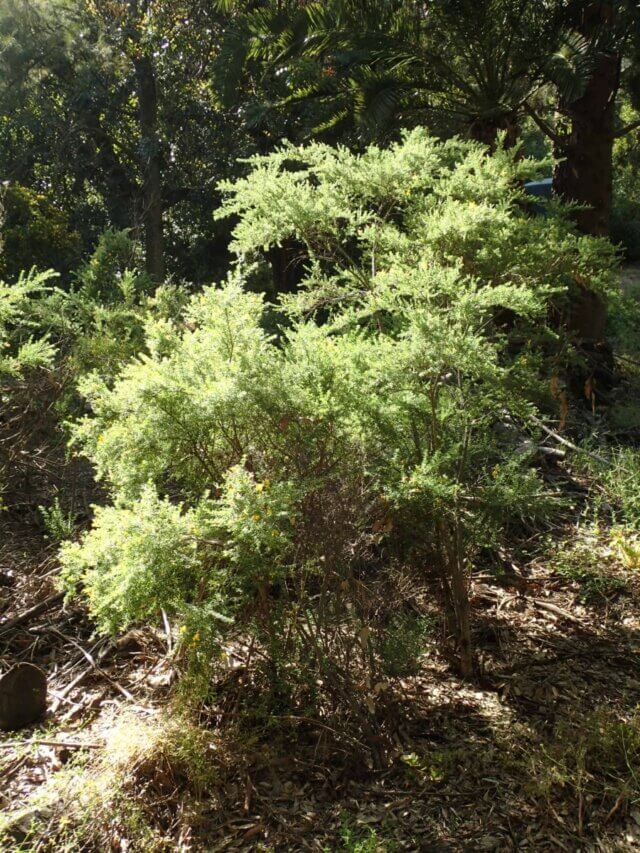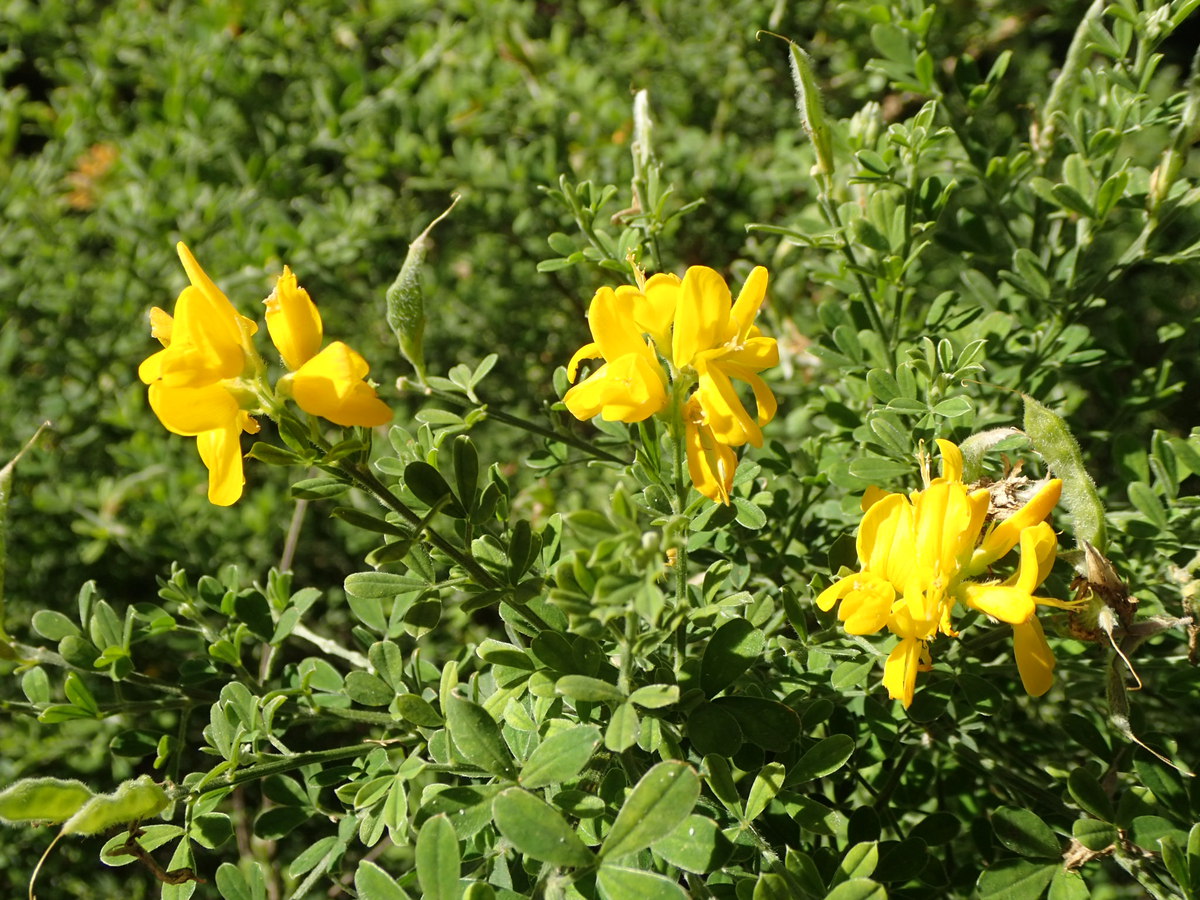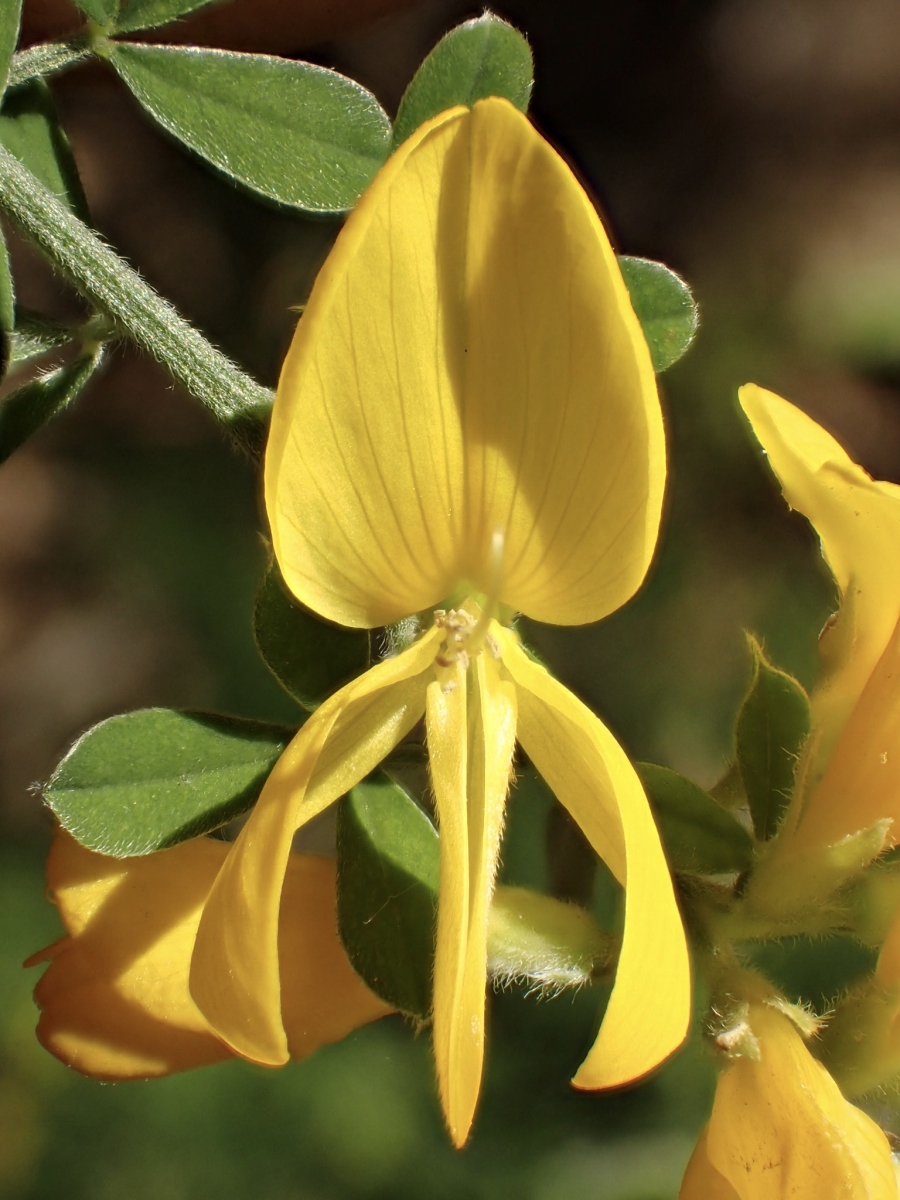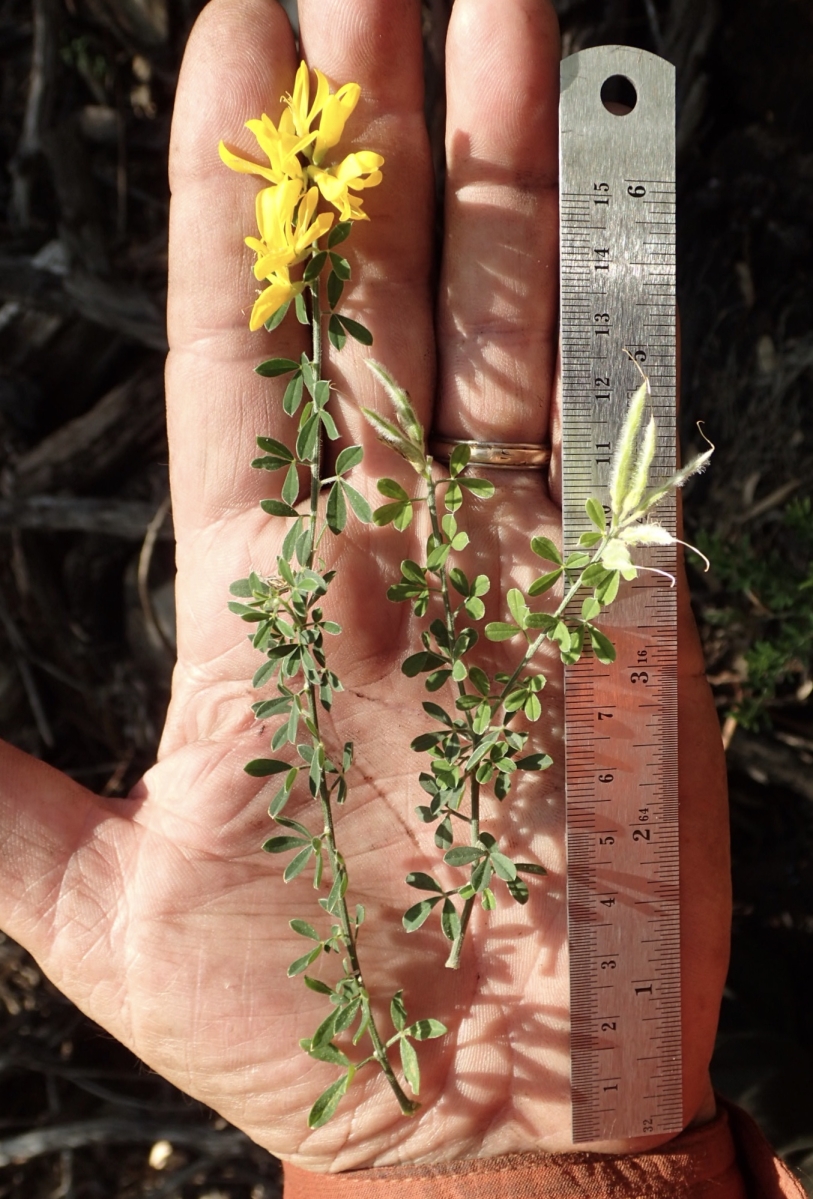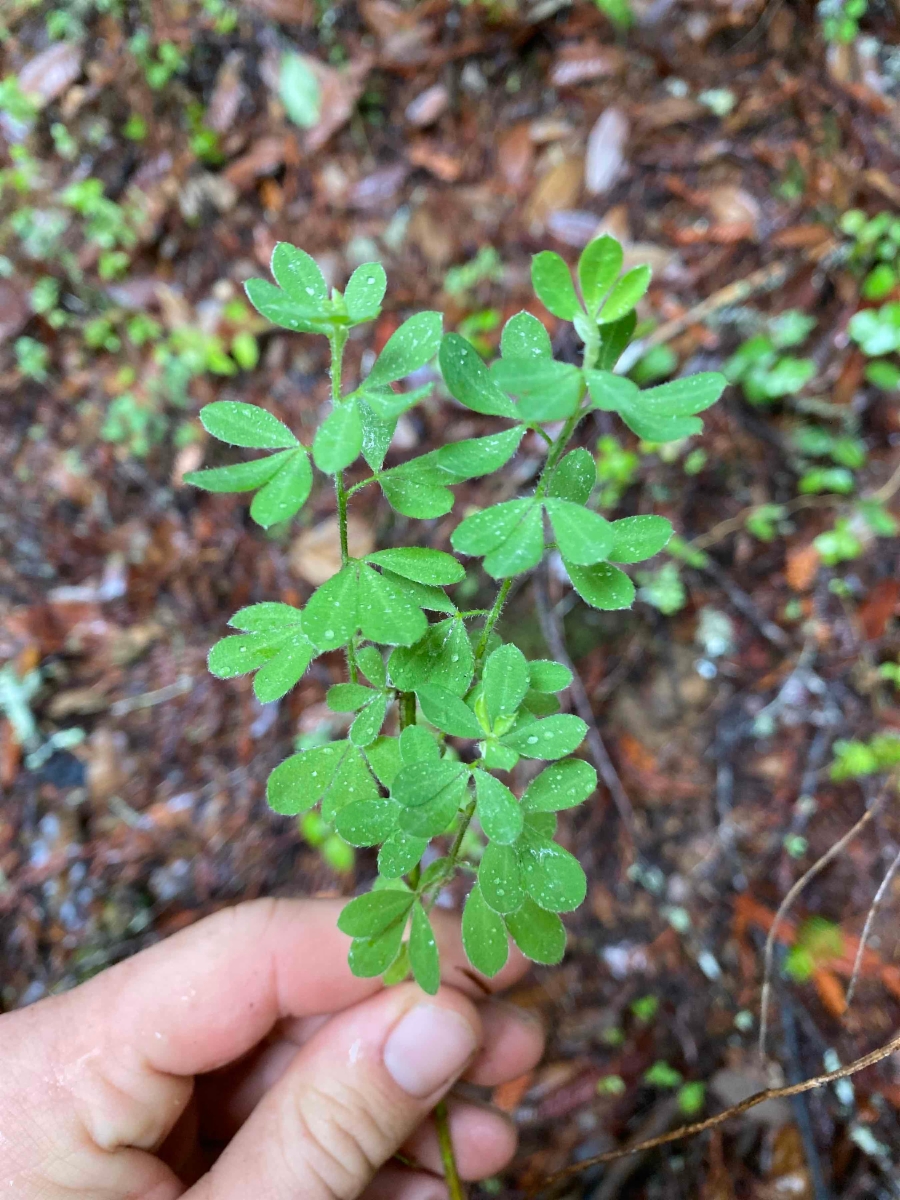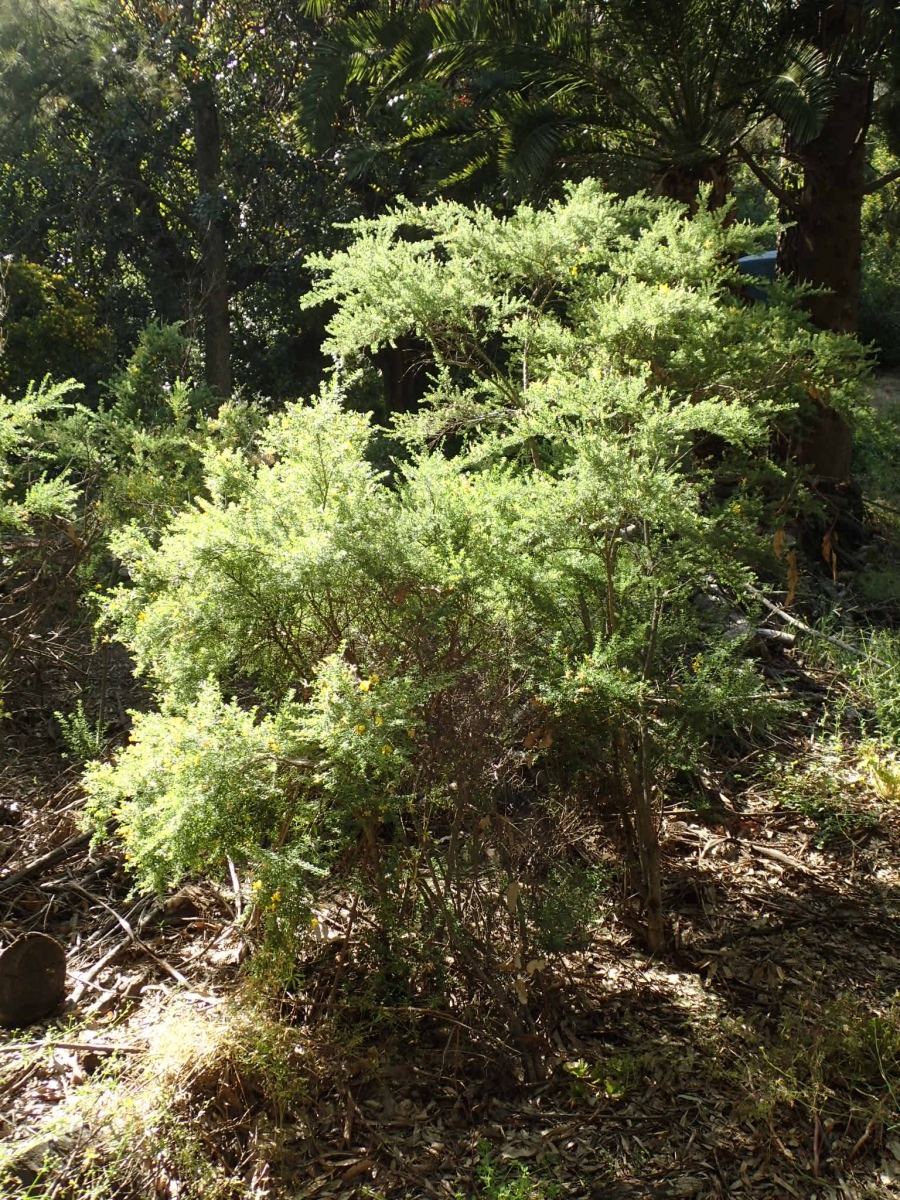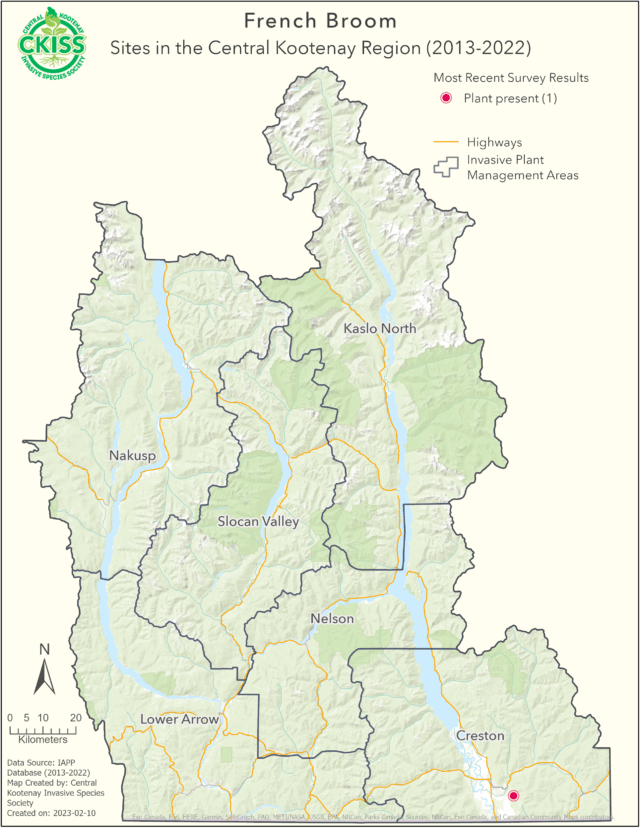Genista monspessulana
Description
- Woody evergreen shrub that typically grows to 3 m tall
- Younger stems are green, ridged, and leafy; older stems are brown and rounded
- Silvery hairs cover young stems and leaves
- Leaves are small, oval in shape, and in groups of three
- Flowers are small, yellow, pea-like, and in clusters of 4-10
- Seeds are in small (1-3 cm long) brown pods covered in silvery-reddish-gold hairs
- Resembles other broom species. Key traits that distinguishes it from Scotch broom: brown stems, leaves grouped in threes (some Scotch broom leaves are single), smaller flowers, and seed pods covered in hairs (Scotch broom pods are only hairy on the edges)
Introduction and spread
- Native to Europe and the Mediterranean
- Likely introduced to North America as an ornamental
- Can escape cultivation and become highly invasive
- Spread has been associated with agro-forestry practices
- Spreads by seed, but can re-sprout from the crown when cut/burned
- Seeds can survive in soils for at least five years
Consequences of invasion
- Prefers open, sunny, well-drained sites, but its tolerance to drought and nutrient-poor soils means it can invade a wide range of areas (e.g., roadsides, fields, logged areas, bluffs, riparian areas)
- Displaces native vegetation and alters habitats
- Reduces forage for livestock and wildlife
- Toxic when ingested, causing digestive disorders, staggering, and paralysis in some livestock
- Impacts reforestation by smothering and shading out saplings
- Contributes to higher fuel loads and hotter wildfires
- Difficult to eradicate established populations due to its high seed production and viability
Status in the CKISS region
- French broom is classified as Prevent on the CKISS Annual Priority List.

- It is also classified as Provincial EDRR by the provincial government, and is managed by the Province. Please report any sightings immediately to the Province.
- To learn more about how CKISS classifies and manages invasive species, see our Invasive Species Priority Lists page.
Integrated pest management options
Prevention
- Learn to identify this plant and report any sightings!
- Do not plant this species. Learn about Grow Me Instead and PlantWise to grow native plant alternatives.
- Immediately revegetate bare, disturbed soils with a non-invasive seed mix to reduce invasion.
- Do not move contaminated soils to a new area.
- Clean your clothing, boots, vehicles, gear, and pets before entering/leaving an area.
Mechanical control
- Hand-pull small patches of young seedlings before seed set.
- Cutting plants at ground level is most effective during the dry season.
- Re-plant and mulch treated areas to reduce seed germination.
- Monitor for regrowth, usually for multiple years following treatment.
Chemical control
- Apply herbicides when plants are growing most actively during spring/early summer, before the dry season (after flowers form but before seed set).
- Chemicals that have shown to be effective include picloram, triclopyr, glyphosate, fluroxypry, and metsulfuron.
Cultural control
- Grazing (e.g., by goats) may provide effective management, but may require follow-up herbicide treatments on re-sprouts.
- Prescribed burns may aid in reducing the seedbank, but should be used as an integrated strategy and will require post-fire monitoring.
Biological control
- There are currently no known biocontrol agents for this species in BC.
Additional resources
- French broom | King County
- French broom | CABI Compendium
- French broom | CAL-IPC
- French broom | USDA
